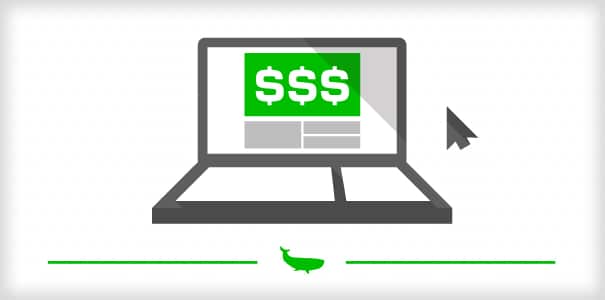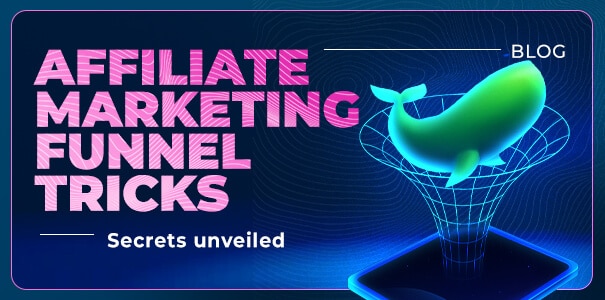
We’ve already determined that the main purpose of a landing page is to convert your website’s visitors into paying customers. You want to grab their attention, and get them to buy your stuff. Simple as that.
Unlike a generic website homepage, your landing page is not just about informing your potential customers. It’s the final step of your campaign, you want it to be straightforward and effective, serving the purpose of having your visitors do ONE thing. You want them to follow a well defined path until they complete the action you expect.
It’s really the most crucial part of your sales process: it’s hard enough to generate traffic, once you got visitors in your grasp, you don’t want to let them go.
So how do you design a landing that helps you hang on to those precious visitors?
Part 2 - How-to Design Efficient Landing Pages
If you want to design an efficient landing page, you can’t just throw a couple of pictures, random text and a bunch of clickable links on a webpage. Your landing page has to be faithful to your entire strategy. It has to be a cleverly designed extension of your ad tools and a convincing - yet accurate - preview of the product you are promoting.
Let’s look at some basic guidelines to follow if you want to design a personalised and efficient landing page.
An Extension of the Ad Tool
First of all, the sales page has to be an extension of the ad tool. When visitors click on a banner or any other ad tool, they do so because what they see attracts them.
So when they get to the landing page, they should find something that’s related. You want content, text, design that’s related to what attracted them in the first place. The idea is to make the visitors feel like they're following a natural path that's going to lead them to what they’re looking for.
Landing Pages Layout
When you're designing a landing page, you should pay particular attention to the following elements:
The Header
The header has to draw the visitors’ attention immediately. It has to match what was promised to them before they were taken to the landing page. So the idea here is to have a header that’s very visible and that contains a clear message that corresponds to what you think the visitors are looking for.
The Body
Most internet users don’t like to waste their time trying to figure out what’s going on. You have to keep that in mind when you write copy. The message has to be clear, and concise. The visitors should be able to understand the product's advantages in a matter of seconds.
If you post images or even videos, make sure they match what you promised in your ad tools, and what you think your traffic is looking for. It’s also better if the content is faithful to what the product has to offer.
That’s your chance to personalise, to adapt to your traffic. As a webmaster, you know what your traffic is looking for. Try to find the personalised arguments that speak to your visitors. Adapt your copy and content to your audience.
The Call to Action
The landing page isn’t the end destination. The conversion is. So you have to make sure that the visitors don't have any other choices but to keep folowing the path you prepared for them. You have to seal the deal with a strong call to action.
First, the call to action should be easy to find. Use contrasting colours and place it where it will stand out. The call to action should be one of the most visible, most obvious elements of the landing page.
Second, the message in your call-to action has to be obvious and it has to trigger an action: “Get your free account now!” “, Get laid tonight!”, “See me live!”, etc. You don’t want visitors to have to think about what they should do next. Show them what the next logical step is: buying your product.
Keep it Above the Fold
When you design a landing page, one of the most important things to take into consideration is that all the important elements are above the fold. If visitors have to scroll down to find the call to action, that’s not good…
Anything that’s not above the fold should only be complementary information like testimonials or reviews.
Adapt for Mobile
If you have a lot of mobile traffic, it’s always better to design a mobile version of your landing page. Visitors shouldn’t have to zoom in to be able to click the call-to-action... There are more and more mobile users everyday. Don't miss out!
Do it Right
If you’re going to design a landing page, do it right, be professional.
When you choose your material make sure it’s public, that you’re allowed to use it. Don’t get sued for copyright infringement.
If your landing page is a blog page, follow the blogging platform’s TOs. You might not agree with them, but that’s not going to help you if your blog gets shut down.
Don’t use misleading tactics. Of course you want to sell, but you’re not a used car salesman. If you want to build a long term business, stay away from straight-to-form, content locking and other deceitful tactics. Internet users are savvier than you might think. You’ll be much better served by a honest yet engaging strategy.
Coming Up
There are many elements in a landing page and it can be hard to determine what's optimal. Use your instincts. You're a consumer yourself, so go with what feels right. But if you really want to optimize your landing page there's no secret there. You have to test...
We'll have more on testing your landing page comping up right here in the blog. Stay posted!


